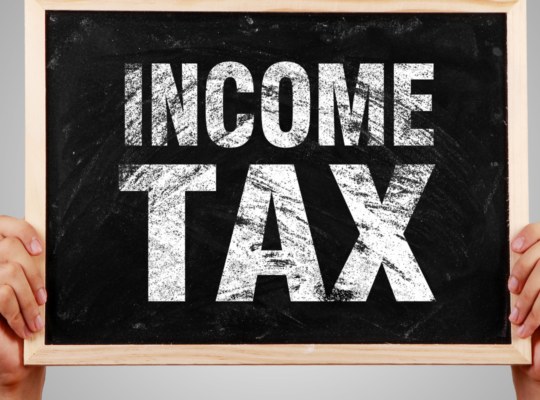
A reverse mortgage is often promoted as a useful financial solution for senior citizens who own their homes. However, it is frequently observed that this option is not widely embraced by retirees. A range of cultural, legal, and practical factors has been identified as limiting its popularity.
The reverse mortgage process is explained in this blogpost, its benefits and drawbacks are discussed, and the reasons for its limited adoption, especially in India.
Table of Contents
A Cautionary Tale from France
A famous story from France is often recounted as a warning about the potential pitfalls of reverse mortgages. It was reported that a Frenchman named Andre-Francois Raffray had reached an agreement in December 1965 with a 90-year-old woman named Jeanne Calment. According to the deal, a monthly payment of 2,500 francs was to be provided to Calment until her death, after which ownership of her house was to be transferred to him. It was believed that the arrangement would prove very beneficial, and the deal was seen as attractive at the time.
What was not foreseen, however, was that Calment would live for an additional 32 years. By the time she passed away at the age of 122 on 4 August 1997, it had become clear that the total payments made would far exceed the value of the house. Although Raffray himself had died before her, it was later determined that the sum paid was more than double the home’s market value. This story has been widely cited in discussions about reverse mortgages, and it has been used to illustrate that unforeseen longevity and changing circumstances may lead to unexpected financial outcomes.
Understanding the Concept of Reverse Mortgage
A reverse mortgage is defined as a loan that allows senior citizens to tap into the equity of their home without being required to make monthly loan repayments during their lifetime. The basic idea is that the value of the home is used as collateral, and the homeowner is provided with a steady income. In return, the loan, with accrued interest, is repaid only when the borrower, or in the case of a couple, both spouses, have died or permanently moved away from the property.
It is often explained that the monthly income received from a reverse mortgage is not subject to income tax. Additionally, once the property is sold and the loan is repaid, any surplus from the sale is typically transferred to the legal heirs of the borrower. Thus, it is seen as a way to unlock the cash value of a home while allowing the homeowner to continue living there.
How a Reverse Mortgage Works
The process by which a reverse mortgage is arranged involves several important steps. In India, this type of loan is offered by banks, albeit with certain modifications that reflect local market conditions and regulatory requirements. The below seven points discuss how this reverse mortgage works:
1. Eligibility and Age Requirements
It is generally stated that the reverse mortgage option is available to senior citizens. A person must be at least 60 years of age to qualify, and in the case of a couple, at least one spouse should be 55 or older. In addition, it is required that the borrower owns a residential property that is free from any legal disputes. It is also noted that properties used for commercial or agricultural purposes are typically excluded from eligibility.
2. Documentation and Verification

Once the decision is made to proceed with a reverse mortgage, the borrower is required to submit a range of documents. These include proof of identity and the title deed of the property, among others. The submitted documents are then verified by the bank to ensure that the property is clear of legal issues and meets all necessary criteria. It is ensured that the property is not involved in any disputes and that it conforms to the eligibility requirements before the loan process is advanced.
3. Property Valuation
An important step in the reverse mortgage process is the valuation of the property. A professional valuer is appointed by the bank to assess the current market value of the home. It is commonly agreed that banks may offer a loan amount of up to 80% of the assessed property value. The remaining 20% is retained as a safety margin to cover any unforeseen losses. For example, if the property is valued at Rs. 1.25 crore, the maximum loan amount is typically capped at around Rs. 1.0 crore. This process is intended to protect the interests of both the borrower and the bank.
4. Disbursement of Funds
After the property has been valued and approved, the loan amount is disbursed as regular monthly payments. This steady income is designed to help the retiree manage daily expenses and unforeseen costs. In cases where an emergency arises—such as a sudden need for medical treatment—a lump sum payment may be offered. However, this lump sum is usually limited to a fraction of the total loan amount (for example, up to 50%, with a cap such as Rs. 15 lakh) and is deducted from the overall funds available.
5. Interest Accrual and Payment Terms
It is noted that the reverse mortgage includes an interest component, and both the principal and the accrued interest are included in the total loan balance. As payments are made to the borrower, interest continues to accrue on the remaining balance. It is understood that this accumulation of interest is a significant part of the reverse mortgage process, and the total amount due increases over time. The interest is not repaid by the borrower during their lifetime; instead, it is settled when the property is eventually sold.
6. Periodic Revaluation and Loan Tenure
Every five years, a revaluation of the property is carried out by the bank. This step is performed to account for any changes in the market value of the home, whether due to improvements in the neighbourhood, general market trends, or the effects of wear and tear on the property itself. The revaluation may lead to an upward adjustment of the available loan amount if the property’s value has increased, or a downward adjustment if the value has decreased.
Typically, the loan is structured to be provided over a period of 15 years, though some banks offer the possibility of extending the term to 20 years. It is important to note that while the monthly income stops at the end of the loan term, the borrower is not required to make any repayment during their lifetime.
7. Repayment and Transfer to Heirs
Repayment of the reverse mortgage is deferred until the borrower (or both borrowers, in the case of a couple) either passes away or permanently moves away from the property. At that point, the bank is permitted to auction the property to recover the outstanding loan amount. Any surplus that remains after the sale and repayment of the loan is usually transferred to the legal heirs. In some cases, an option is provided to the heirs to repay the loan amount and retain ownership of the property rather than having it sold at auction.
Drawbacks of Reverse Mortgages
Despite the potential benefits of reverse mortgages, a number of drawbacks have been identified that make the product less attractive to many retirees.
1. Age and Property Limitations
One of the major drawbacks is related to eligibility criteria. It is required that the borrower be at least 60 years old, and if the property is owned by a couple, one of the spouses must be a minimum of 55. In addition, the property must be relatively new, with most banks insisting that it should not be older than 40 years. It is frequently observed that commercial properties and agricultural lands are not eligible for reverse mortgages. These restrictions mean that many homeowners, especially those with older or ancestral homes, are automatically excluded from the program.
2. Higher Interest Rates and Cost of Funds

It is commonly stated that the interest rates applied to reverse mortgages are higher than those on conventional home loans—by approximately 2–3%. As interest is continuously accrued and added to the principal, it is observed that a significant portion of the total loan amount is consumed by interest charges over time.
For instance, if a property is valued at Rs. 1 crore and the maximum loan amount is Rs. 80 lakhs, it is often noted that around 58% of this loan amount (roughly Rs. 46.8 lakhs) might be absorbed by interest and other associated charges, leaving only about 42% (approximately Rs. 33.2 lakhs) available as actual cash in the form of annuity payments. Such high interest costs are seen as a disadvantage of reverse mortgages.
3. Mandatory Residency Requirement
A key clause in the reverse mortgage agreement requires that the borrower must continue to reside in the property throughout the life of the loan. It is explained that if the homeowner does not live in the mortgaged property for more than 12 consecutive months, the bank is entitled to take possession of the house. This requirement is viewed as inflexible by many potential users, particularly those who might need to relocate to live with family members or to move into a care facility due to changing health needs.
4. Insurance Obligations and Premium Costs
Another drawback that is frequently mentioned involves the mandatory insurance requirements. It is often required that the borrower take out both home and life insurance policies as part of the reverse mortgage arrangement. Given the advanced age of many applicants, it is observed that the premiums for such insurance policies can be very high. These additional costs are seen as burdensome and reduce the overall appeal of the reverse mortgage product.
5. Cultural and Practical Challenges in India
In the context of India, several cultural and practical factors have been identified that limit the popularity of reverse mortgages among senior citizens.
6. Inheritance and Legacy Concerns
Cultural traditions in India are often cited as one of the primary reasons for the limited adoption of reverse mortgages. It is widely believed that Indian families prefer to pass on their assets—especially their homes—as a legacy to the next generation. As a result, the idea of converting a home into a source of monthly income, while sacrificing the eventual inheritance, is met with significant resistance. Many potential borrowers are reluctant to mortgage their ancestral property, even if doing so could alleviate their current financial burdens.
7. Restrictions on Property Age
It has been noted that most banks in India impose strict restrictions regarding the age of the property that can be used for a reverse mortgage. Typically, properties that are more than 40 years old are not accepted because they are considered to be structurally weak or in need of major repairs. Since many ancestral homes in India are quite old, a large number of retirees find that their property is ineligible for a reverse mortgage.
8. Limitations on Loan Amounts
The maximum loan amount offered under reverse mortgage schemes in India is generally considered to be insufficient when compared to the actual market value of the property. It is commonly reported that banks offer loans of up to Rs. 1 crore for reverse mortgages, with slightly higher limits provided for properties located in metro areas (sometimes up to Rs. 1.5 or 2 crore). However, for homeowners with high-value properties, the available funds may be considerably less than what is needed, reducing the attractiveness of the product.
Challenges Faced by Banks
It has been recognized that banks themselves encounter a number of challenges when it comes to offering reverse mortgage products. These challenges contribute to the product’s low promotion and slow adoption in the market.
a) Difficulties in Recovering Loan Dues
When the reverse mortgage loan reaches maturity—that is, when the borrower passes away or vacates the property—the bank is required to recover the outstanding loan amount by auctioning off the property. It is often reported that if the property is old or has depreciated in value, it becomes very difficult to find a buyer at a satisfactory price. In addition, the process of issuing notices to legal heirs and dealing with any disputes can be both time-consuming and costly.
b) Legal Complications

It is frequently observed that legal issues arise if the deceased homeowner has bequeathed the property to individuals who are not recognized in the bank’s loan documentation. Such situations may lead to lengthy legal battles and further complicate the recovery process. Banks are therefore cautious, as the possibility of legal entanglements adds another layer of risk to offering reverse mortgage loans.
c) Concerns Over Property Deterioration
Concerns have also been raised about the long-term maintenance of the mortgaged property. It is often observed that as a building ages, its condition may deteriorate, thereby reducing its market value. This deterioration not only affects the borrower’s ability to live in the property comfortably but also poses a significant risk for banks, which may be forced to accept a lower sale price when the property is eventually auctioned.
Who May Benefit from Reverse Mortgages?
Despite the challenges outlined above, it is believed that reverse mortgages may be a viable financial option for a specific segment of senior citizens. The product is generally considered most beneficial to those who do not have dependents or whose children are financially independent enough not to require an inheritance of the family home.
It is often recommended that only retirees with certain characteristics should consider a reverse mortgage. It is advised that the property used in the agreement should be relatively modern—usually not older than 40 years—and should have a market value that falls within the limits set by the lending institution. In many cases, it is suggested that the property’s value should not be significantly higher than Rs. 1 crore, or Rs. 2 crore in metro cities, for the reverse mortgage to be considered practical.
Financial Planning Considerations
Potential borrowers are frequently advised to conduct a thorough assessment of their future financial needs before committing to a reverse mortgage. It is recommended that a detailed comparison be made between the fixed monthly income provided by the reverse mortgage and the anticipated increase in living expenses over time. Inflation and rising healthcare costs should be taken into account. Financial experts have often suggested that professional advice be sought to ensure that the reverse mortgage aligns with the retiree’s long-term financial planning.
Practical Considerations of Reverse Mortgage and Future Prospects
The reverse mortgage market in India is still considered to be in a developmental stage. It is observed that many potential users are not fully aware of how reverse mortgages work, and the product is often viewed as overly complex. It is believed that further efforts in terms of consumer education and product simplification are required. With increased understanding and better promotional strategies, it is hoped that reverse mortgages may eventually become a more widely accepted financial tool for senior citizens.
Some financial experts have suggested that if banks are able to address the current challenges, such as stringent property age restrictions, high insurance premiums, and complicated legal procedures, the popularity of reverse mortgages might gradually improve. In the future, it is hoped that the product may be restructured in a way that reduces risks for both borrowers and banks, thereby making it a more attractive option for a larger segment of the retired population.
Conclusion: Final Thoughts on Reverse Mortgages
In conclusion, it has been noted that reverse mortgages are currently not popular among retirees due to a variety of factors. The process is often perceived as burdensome because of eligibility restrictions, higher interest rates, mandatory residency clauses, and costly insurance requirements. Cultural traditions that emphasize the importance of passing on property as an inheritance further reduce the appeal of reverse mortgages in India.
Banks are also faced with practical challenges, including difficulties in disposing of older properties, legal complications involving heirs, and concerns over property deterioration. While a reverse mortgage does offer the advantage of providing tax-free income without requiring regular repayments during the borrower’s lifetime, these benefits are outweighed by the many drawbacks in the eyes of many potential users.
It is believed that reverse mortgages may be best suited for a specific group of retirees—those who have no dependents or for whom inheritance is not a priority, and whose properties meet the eligibility criteria. For those who are considering this option, it is advised that a careful evaluation of future expenses, the current market value of the property, and potential legal hurdles be undertaken, and that professional financial advice be sought.
Check out my other article on the proven financial steps that you can follow when you are about to transition from being a Tenant to a Homeowner.
Do Follow me on Linkedin and Quora for more insightful posts on personal finance, money management, debt management, investments and much more.





